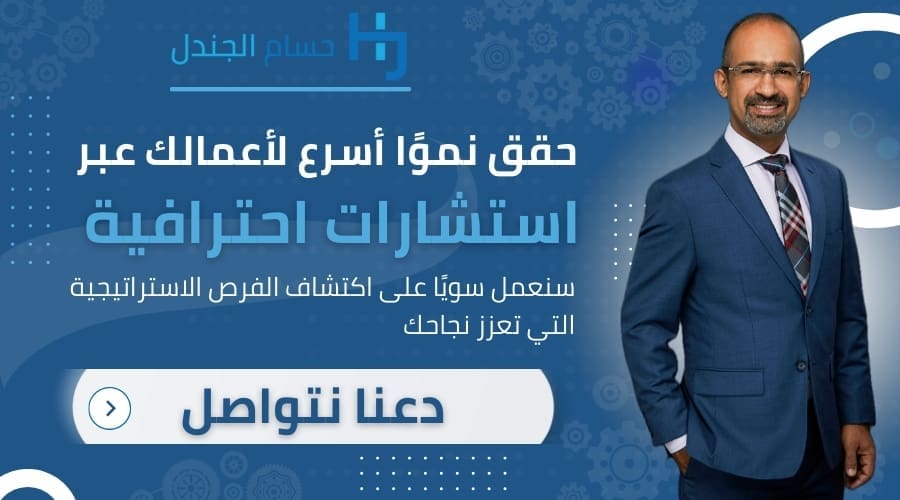 A strong blog can help your site attract more traffic, generate more leads, convert more often, and dramatically improve your return on marketing investment (ROMI). However, even little blog mistakes can greatly impact the results, and some are very easy to make.
A strong blog can help your site attract more traffic, generate more leads, convert more often, and dramatically improve your return on marketing investment (ROMI). However, even little blog mistakes can greatly impact the results, and some are very easy to make.
Below, I’ll walk you through ten of the most common blog mistakes, why each one is a concern, and what to do to correct or refine your blogging strategy.
1. Lack of Relevance to the Reader’s Interests or Needs
Picture the last blog your business published and visualize an actual reader looking at it. Now, answer these questions:
- Who is reading it?
- Where and how are they reading it?
- Why are they reading it? What do they want from you right now at this moment?
- What benefit are they gaining from reading it?
How detailed were your answers? Could you describe what that person looked like, what they did for a living, what device they were using, and other key details? If not, then your content wasn’t relevant—you didn’t know who you were talking to. If so, then also consider this: how did your content meet their needs? If you stumbled with any of these questions, you’re making the first blog mistake.
Speak to your audience.
The first step in making this happen is ensuring the topic and content speak to one of your customer personas. If you don’t already have personas drafted, create some, and always have at least one in mind when you write going forward.
Know what’s trending.
Keep a pulse on what’s happening in your industry and what types of things your readers are searching for. Then, create content around these topics.
Consider where they are in their journey.
Each persona will have unique needs at different points of the buyer’s journey. Therefore, they should have content designed to meet those needs too.
2. Lack of Clear and Compelling Titles
A great title can increase clicks to your blog post by up to 500 percent, according to Wired.
Use a proven formula.
Certain titles also get more clicks, so it’s helpful to follow a proven formula. A few effective approaches with examples are highlighted below:
- Lists: ex. “10 Tips for Developing Your Influencer Marketing Strategy”
- How To: ex. “How to Boost Your Profits with a Customer Care Program”
- Best/ Top: ex. “Top 10 Email Newsletter Best Practices to Boost Your Results”
- Guide: ex. “A Complete Guide to Producing Evergreen Content”
- Why You Should: ex. “UTM Tracking: What it is and Why You Need it”
- Mistakes to Avoid: ex. “Digital Suicide: 8 Mistakes That Can Sabotage Your Digital Marketing Success”
- Versus: ex. “Going Local vs. Global: How to Choose Your Domain Extension”
- Question: ex. “What Should You Do with Unqualified Leads?”
Include power words.
“Power words” are words or phrases that influence clicks by creating an emotional or psychological response. For example:
- Advice
- Better
- Double
- Easily
- Epic
- Genuine
- Hack
- How To
- Insider
- Lurking
- Make You
- Mistakes
- Myths
- Pitfall
- Powerful
- Quickly
- Simple
- Skill
- Surge
- Unexpected
- Viral
Test a few.
Draft several titles for each blog. Then, if your software permits, try running A/B tests to see which one works best. A tool like the CoSchedule Headline Analyzer can also help you craft better titles, especially if you’re just starting out.
3. Poorly Written or Poorly Edited Content
It doesn’t take much for a reader to lose trust that what they’re reading is accurate. A simple typo, such as using “affect” instead of “effect,” is enough to turn off discerning readers. Many readers will get lost if sentences are long or complicated too. Even using longer or more complicated words than necessary will detract from your message.
Hire a professional writer.
The fact that someone on your team can write doesn’t make them a writer. Being a writer doesn’t even mean someone is an effective blog writer or that the person has the time to dedicate to quality content creation. If you’re going to invest in content, always have a professional writer craft your blog posts.
Use tools to check the quality of your writing.
Don’t trust Microsoft Word’s spellcheck tool to catch all your grammar errors. Instead, work with a specialty program such as Grammarly. It will catch all sorts of things native spellcheck and grammar tools miss. Many businesses also leverage tools like the Hemingway App to create simpler and clearer content.
Have an editing process.
People are notoriously bad at catching their own mistakes. “What we see on the screen is competing with the version that exists in our heads,” explains psychologist Tom Stafford in Wired. As someone who studies the science of typos, Stafford says that because we already know what we’re trying to convey, we make the connections while proofreading, even if the connection isn’t there for readers. Furthermore, our brainpower goes toward the complex task of explaining concepts rather than the low-level task of catching errors.
For this reason, someone other than the writer should always review the content and edit it before publishing. Many businesses have a subject matter expert review the content too. That way, you catch factual errors and issues with the writing.
4. Poor Formatting or Layout
People don’t read web content like a book or printed pamphlets. Instead, 79 percent of visitors to your blog scan the page rather than going through it word-by-word, per NN Group usability research. The easier you make it for them to do this, the longer they’re likely to stay on the page.
Use subheadings effectively.
Blog posts should be broken down with H2 subheadings that make it easy to scan the content and understand each section. Additional H3 and H4 subheadings can be used under the H2 subheadings to cover in-depth concepts as needed.
For example, this page uses H2 subheadings to make it easy to spot the list. Each one corresponds with one of the ten blogging mistakes the title promises to show you. That way, people who visit can get a feel for what they will learn before committing to reading the whole page. The H3 subheadings are used to indicate ways to correct the mistake. Someone can visit this page and walk away knowing the ten mistakes and various contributing factors in under a minute.
Keep paragraphs concise and brief.
Most people learn in school that a paragraph requires at least five sentences: the topic, three supporting lines, and a conclusion. Unfortunately, that’s not true in web writing. People tend to skip long paragraphs, so it’s better to focus each one on a single topic and explain it as concisely as possible.
Include bullet point lists as appropriate.
Bullet point lists break up blocks of content nicely and make the page more scannable.
Be selective when formatting text.
Formatting techniques, such as using bold, italics, and highlighting, can make the text easier to scan because the eye is naturally drawn to novelty. However, formatting is often overused. If you’re using bold words throughout a paragraph, the reader’s eyes don’t know what to focus on, so the reader doesn’t know what’s most important. Instead of the reader catching that they’re all important topics, most will simply skip over the content because it’s too overwhelming.
5. Lack of Visual Media

Content with visual media, such as images and videos, gets 94 percent more traffic than written text, per Search Engine Journal research. Visuals make it easier for people to recall information on a page later too.
Include pictures of real people.
Visitors spend ten percent more time looking at pictures of people on a page than they do focusing on corresponding content per NN Group. That’s true even when the written text takes up 316 percent more space than the images.
Experiment with infographics.
Including infographics can boost traffic by 12 percent, per Search Engine Journal research.
Include videos as appropriate.
People spend 40 percent more time on pages with video than without, per Wistia research. Although it’s possible to keep people on a page for an extended period without using videos, Wistia’s research shows that the best-performing pages typically include videos too.
6. Lack of Sufficient Promotion or Marketing
Optimizing your blog posts for search engines is a good start. Next, however, you’ll need to promote your content to get it the mileage it deserves.
Follow the 20/80 rule.
Many businesses with millions of blog visitors attribute their success to leveraging the 20/80 rule or similar approach, as GoDaddy research shows. That means 20 percent of your time goes to blogging, and 80 percent goes to promoting the blog. In other words, if you only have one hour, 48 minutes of it should go to promotion.
That doesn’t mean you should spend 18 hours per week promoting a single post that took you 4.5 hours to write. You should be promoting your evergreen content too.
Diversify your channels.
Your social media strategy should involve being active on the sites your personas use, focusing your efforts on the networks in which they’re most active. Identify multiple ways to frame the same piece of content and trickle your posts out to increase visibility. The ideal frequency varies by network.
Newsletters are another great opportunity to share your posts but don’t limit yourself to newsletters alone. Curated groupings of content may be ideal to send to some of your personas or as part of your onboarding process as well.
7. Too Much Jargon
Too much jargon or technical language makes content harder to follow. While some readers will pause to look up a term or scan the page to refresh their memory if it was covered earlier, most will either skip over terms they don’t understand or will leave the page.
Speak the way your readers do.
It’s ok to use terms your readers use. For instance, a medical blog might use terms such as “ambulate” or “upper extremity.” That’s fine if your audience is comprised of medical professionals who would use those words. However, the rest of the world needs to see words like “walk” and “arm” instead, or they won’t take much away from their time on your site.
8. Failure to Include Next Steps
If you don’t offer your readers something else to do when they reach the end of your content, chances are they’ll just leave and won’t return unless they stumble on your work again later.
Include a call-to-action (CTA).
There is not a singular best CTA. The right one to use will vary based on your business, the content, the persona, and the reader’s stage in the buyer’s journey. For instance, an entry-level piece might do well with a CTA that invites the reader to subscribe to your newsletter or offers them more advanced content. On the other hand, if the content is designed more for someone in the decision-making stage, a comparison guide, free trial, or consultation offer might be best.
9. Difficulty Navigating or Accessing the Blog
The main thing to remember regarding navigation and access issues is that not everyone will be using the same technology to access your site. So even if it’s flawless when you view it, that doesn’t mean your reader will see the exact same things you do and have the same great experience.
Keep it mobile-friendly.
More than half of all web traffic comes from mobile devices, according to Google. Some sources even put it as high as 70 percent. So ensure people can easily move through your content regardless of their device type.
Be mindful of accessibility.
Remember that people visiting your blog may have unique limitations or be using special adaptive technologies. For instance, someone who is colorblind may be unable to navigate your site if they’re required to see the difference between the colors green and red or blue and purple. Someone who is visually impaired may miss out on key information if you embed text in your images and/or don’t include appropriate alt-image tags. Someone who is hearing impaired won’t get anything from your videos if they don’t have captions or transcripts.
These things should be addressed purely from the standpoint of providing equal access. However, it’s worth noting that search engines such as Google look for accessibility concerns as part of the user experience. As a result, sites that perform better rank higher and thus receive more organic traffic.
Use a standardized navigation menu.
Try to mimic highly-used websites with your own navigation menu. This makes it more intuitive to use and encourages people to explore your site more.
Work with a pro.
A professional developer will address the concerns above and all sorts of other things like how fast your site loads and security, which impact the user experience too.
10. Lack of Consistent Posting Schedule or Frequency
Simply put, the more high-quality content you produce, the more Google and other search engines have to crawl and the more opportunities your site has to appear in searches. The more you write about your areas of expertise, and the more readers become engaged, the more search engines will see you as the authority on that topic. It means you’ll rank higher and get more traffic. Of course, the freshness of content and updates is a ranking factor too.
Producing content on a schedule also keeps readers happier. They learn what to expect from you and will start proactively looking for your content if they enjoy it. In addition, they have more trust in a blog that’s regularly updated as well.
However, many businesses don’t have the processes and systems in place to support consistent posting, which means it doesn’t happen. Others burn out when they don’t see results right away. While it can take up to a year of consistent posting to see measurable results, businesses prioritizing blogging have 13 times greater ROI than those that don’t, per HubSpot research. So it’s worthwhile to keep at it.
Determine your ideal schedule.
Businesses working to build brand awareness through their blog can start with as little as one or two blogs each month, per HubSpot research. If organic traffic is the goal, three to five times per week is ideal, depending on the blog size. Focus on quality over quantity if these benchmarks aren’t within your reach just yet.
Leverage a content calendar.
A content calendar lays out all your content marketing efforts for a period of time, such as three months. This includes blogs, social posts, infographics, videos, and anything else you might produce in the timeframe. That way, your efforts can feed into one another, and your team is held accountable for meeting deadlines.
Apply resources.
Remember, blogging can get 13 times greater ROI, but results don’t just happen. You will need resources to get these results, including people and tools.
Build a Better Blog and Improve Your Overall Digital Marketing
As a digital marketing consultant with a background in business, I understand the importance of getting maximum ROI from your marketing investment. That’s why I follow a proven recipe that involves putting the right people, processes, and tools in place to ensure my clients are fully equipped for digital marketing success. If your blog isn’t performing as it should, or you want help improving your digital marketing, let’s chat. Contact me for a complimentary consultation.





































































